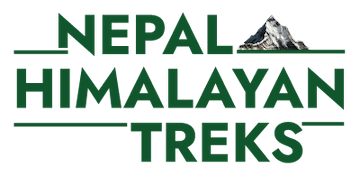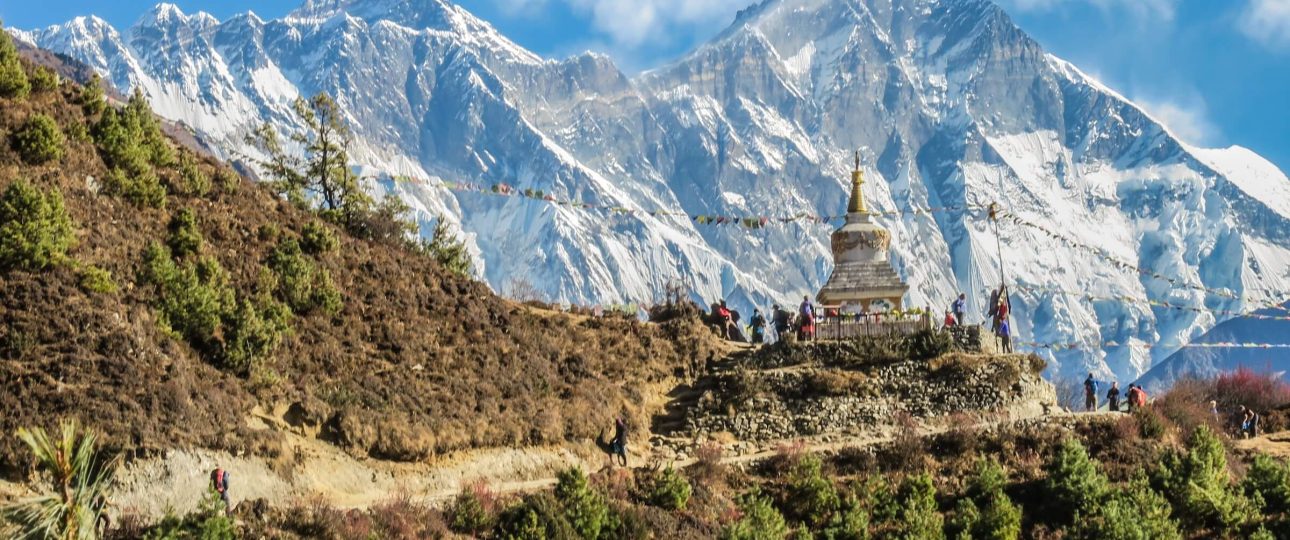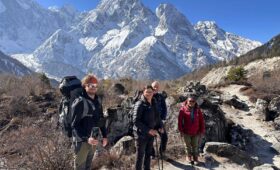Trekking to Everest Base Camp (EBC) is a dream for many adventurers and mountain lovers. Choosing the best time to trek Everest Base Camp can significantly impact your overall experience, ensuring clear skies, comfortable temperatures, and safe trail conditions. Whether you’re looking for the best season for Everest Base Camp trek, aiming for the most scenic Everest Base Camp trekking experience, or wondering about Everest Base Camp weather conditions, this guide covers everything you need to know.
Seasons in the Everest Region
Nepal experiences four main seasons: spring, summer (monsoon), autumn, and winter. Each season offers a unique perspective on the Everest region, but two stand out as the best time to hike Everest Base Camp.
Best Seasons to Trek Everest Base Camp
1. Spring (March to May)
Highlights:
- Blooming rhododendrons and vibrant landscapes.
- Moderate temperatures and excellent visibility.
- Longer daylight hours for trekking.
- Ideal for first-time trekkers due to stable weather.
Spring is one of the most popular times for an Everest Base Camp trekking adventure. The trails are alive with trekkers, and the scenery is breathtaking. Snow still caps the peaks, and the vibrant flowers add a touch of color to the rugged terrain. Temperatures range from 12°C to -10°C, making it a comfortable season for hiking. The stable weather conditions and clear skies make it an excellent choice for photography and adventure seekers alike.
2. Autumn (September to November)
Highlights:
- Clear skies and stunning mountain views.
- Stable weather conditions, minimizing risks of delays.
- Perfect for photography with sharp, high-contrast landscapes.
- Pleasant temperatures for high-altitude trekking.
Autumn is the best time for Everest Base Camp trekking for those who prioritize breathtaking mountain vistas. Post-monsoon skies are crystal clear, offering uninterrupted views of Everest and its neighboring peaks. The temperatures, ranging from 15°C to -5°C, are ideal for trekking. Trails are busiest during this season, so early bookings are recommended. Additionally, the famous Mani Rimdu Festival in Tengboche Monastery occurs during autumn, offering a unique cultural experience.
Other Seasons: Challenges and Rewards
While spring and autumn are the most popular, trekking during summer or winter has its own charm and challenges.
3. Summer/Monsoon (June to August)
Highlights:
- Lush green valleys due to monsoon rains.
- Fewer trekkers, offering a more peaceful experience.
- Ideal for nature lovers who enjoy blooming alpine vegetation.
Challenges:
- Heavy rainfall can cause slippery trails and landslides.
- Limited visibility due to clouds and fog.
- Risk of leeches in lower altitudes.
Summer is ideal for solitude seekers and those interested in flora and fauna. However, it’s crucial to be prepared for unpredictable weather and slippery paths. If trekking during this time, it is advisable to carry rainproof gear and be flexible with your itinerary due to potential flight delays to Lukla.
4. Winter (December to February)
Highlights:
- Tranquil trails and fewer crowds.
- Snow-covered landscapes offering unique views.
- Lower cost on accommodations and permits due to low demand.
Challenges:
- Harsh cold with temperatures dropping to -20°C at higher altitudes.
- Potential for trail closures due to heavy snow.
- Increased risk of altitude sickness due to extreme cold.
Winter is best for experienced trekkers looking for a serene and challenging adventure. Ensure you have proper gear and preparation for the extreme cold. Despite the harsh conditions, the trek rewards you with unparalleled solitude and an exclusive experience of Everest in its most pristine form.
Factors to Consider When Choosing the Best Time
When deciding the best time to trek Everest Base Camp, consider the following:
- Weather Conditions: Stable weather enhances safety and enjoyment.
- Trail Crowds: If you prefer solitude, avoid peak seasons.
- Photography: Clear skies in autumn offer the best photo opportunities.
- Personal Fitness: Some seasons demand higher fitness levels due to weather challenges.
- Flight Reliability: Lukla flights are more predictable in peak seasons compared to monsoon months.
- Festival Experience: If you wish to witness local Sherpa festivals like Mani Rimdu, plan your trek accordingly.
Preparation Tips for Any Season
Regardless of when you trek, proper preparation is crucial. Here are some essential tips:
1. Gear Up
- Spring & Autumn: Layered clothing, a good sleeping bag, and sun protection.
- Winter: Heavy-duty insulated gear, crampons, and down jackets.
- Summer: Waterproof clothing, gaiters, and insect repellents.
2. Acclimatization & Hydration
- Follow the recommended trekking itinerary with acclimatization days in Namche Bazaar and Dingboche.
- Drink 3-4 liters of water daily to prevent altitude sickness.
- Avoid alcohol and excessive caffeine intake during the trek.
3. Hire a Guide or Porter
- An experienced guide ensures safety, navigation, and an enriching cultural experience.
- A porter can help reduce your load, allowing you to focus on enjoying the trek.
4. Book in Advance
- Flights to Lukla can be fully booked months in advance, so early reservations are recommended.
- Popular teahouses in Namche Bazaar, Tengboche, and Gorak Shep fill up quickly during peak seasons.
5. Travel Insurance
- Purchase insurance that covers high-altitude trekking and emergency evacuation.
- Check if your policy includes helicopter rescue, which is crucial in case of altitude sickness.
Final Recommendation
For most trekkers, spring (March-May) and autumn (September-November) are the best times to trek Everest Base Camp. These seasons balance weather, visibility, and trail conditions, ensuring a memorable experience. However, if you’re looking for a quieter or more adventurous trek, summer or winter might be perfect for you.
Regardless of when you choose to trek, the Everest Base Camp journey is one of the most rewarding adventures in the world. Proper preparation, understanding seasonal conditions, and choosing the right time for your personal preferences will ensure an unforgettable Himalayan trekking experience.
So, when will you start your Everest Base Camp trek in Nepal?


